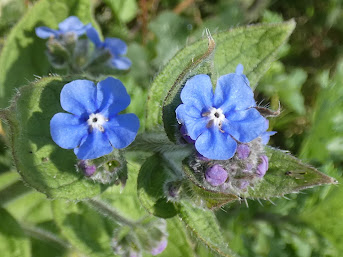Petty Spurge Peter Orchard Tue, 01/31/2023 - 19:47 Species Photograph Introduction Petty spurge, Euphorbia peplus, is one of those plant gardeners consider to be a scourge! It is certainly our most common Euphorbia, even more so than the familiar sun spurge. It occurs not only in gardens, of course, but in cultivated ground everywhere and is very difficult to eradicate, being one of those flowers that, as you pull them out, you help it spread its seeds! In common with some other Euphorbia it has a white sap in its stems which is highly toxic and it has been used to treat some forms of skin cancer hence other names for the plant include cancer weed and radium weed. So, if you despise petty spurge in your garden stop and think about its beneficial properties. It does not always pay to eradicate weeds, they can have their uses Description Petty spurge is a small, annual plant that is native to Europe, Asia, and Africa. It is a...
